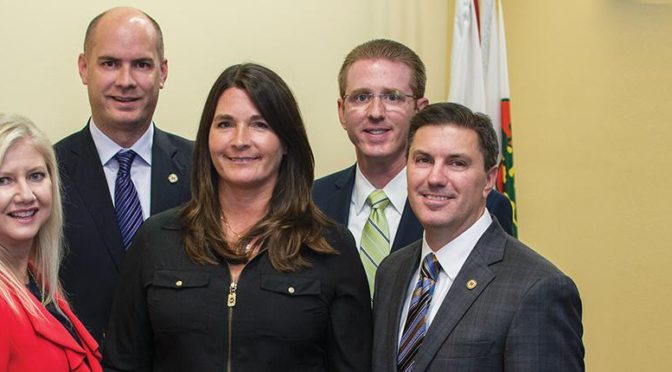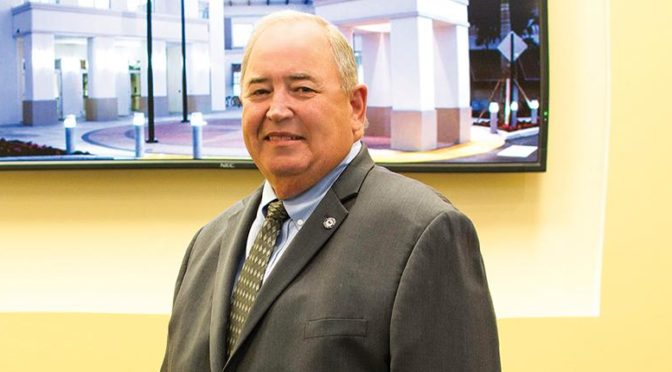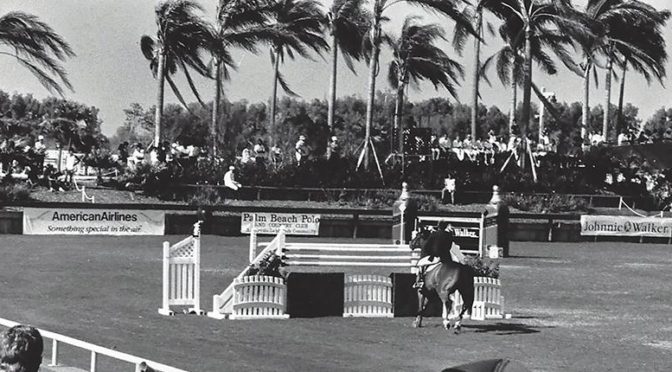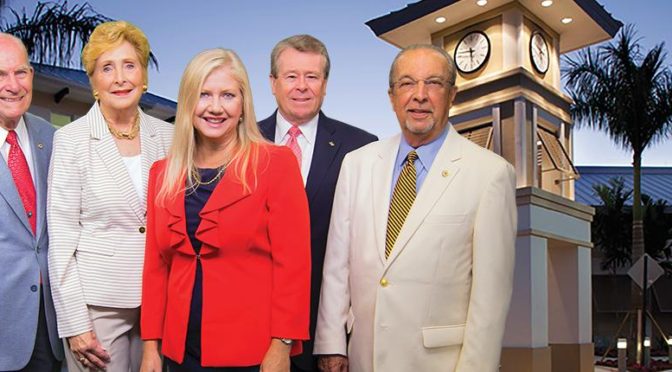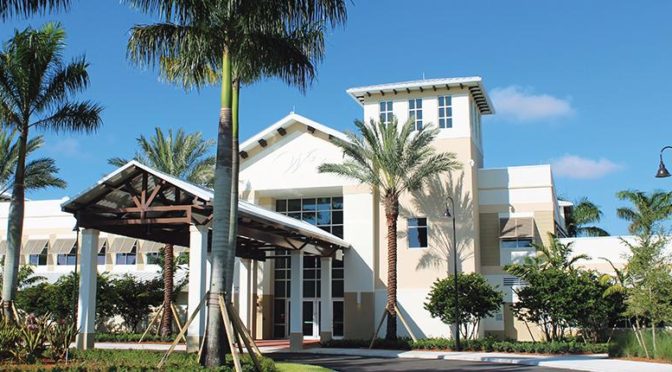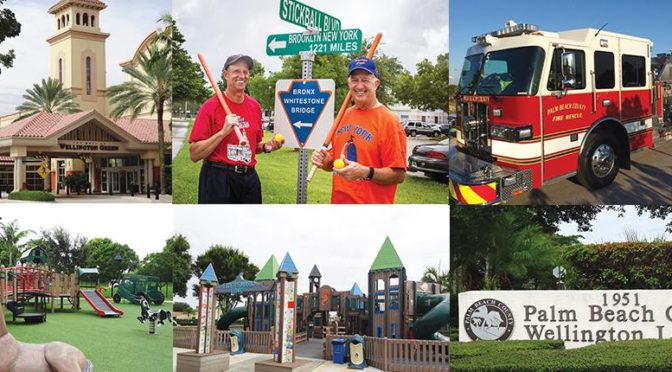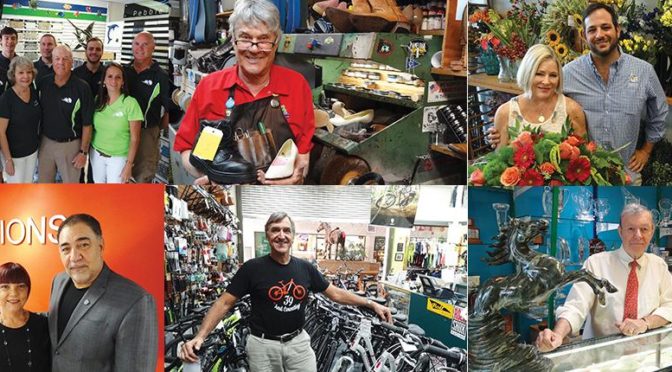OUR MAYORS
Visionary Leaders Helped Wellington Grow Into The Community It Is Today
By Julie Unger
Time sure flies when you’re building a community. It was just 20 year ago that Wellington made the jump from a collection of neighborhoods to an incorporated community. Since then, it has been two decades of amazing growth — topping 60,000 residents this year — and impressive milestones. The winter equestrian capital of the world boasts A-rated schools, great shopping, amazing parks and spectacular amenities, such as the brand-new Wellington Community Center.
After a razor-thin incorporation referendum in November 1995, the Village of Wellington was officially born on Dec. 31, 1995. Official governmental operations commenced after the village’s first election in March 1996.
On March 28, 1996, the inaugural Wellington Village Council took the oath of office. One of its first acts was to choose the community’s first mayor — a role that was awarded to Kathy Foster.
Foster was not new to local government. In 1990, she was elected to a seat on the Acme Improvement District Board of Supervisors, Wellington’s pre-incorporation government. She was a natural choice to be the village’s first mayor, at a time when “mayor” was a title appointed from among the five elected council members.
Foster, who served as mayor from 1996 to 1998, has fond memories of the village’s early days.
“We spent almost the entire first few years concentrating on developing a comprehensive plan for the overall village that would hold up over time and protect the individual lifestyles of the various communities,” she recalled. “We were nine separate subdivisions that were bundled together to become the Village of Wellington. It was our promise to the community that everyone’s lifestyle would be protected and that we would try our best to make sure that the lifestyle that they enjoyed was not negatively impacted in the years to come.”
Wellington became the first municipality in Florida to create an equestrian preserve area in its comprehensive plan, she added.
“I’m thrilled to say that, 20 years later, it still holds up, and at buildout, which is right around the corner, the ideas and the concepts that the first council put in place hold true today,” Foster said. “It has been a great guideline, and in some ways, a bible for the community, as we grew and developed so quickly in the last 20 years.”
Approximately 20,000 people lived here when Wellington incorporated. The village has tripled in population since.
Foster recalls being able to accomplish so much in so little time because the original council members were committed to working together for the good of the community. Through public hearings and open forums, the council was able to learn about what residents wanted. This was formalized in writing when the village adopted its comprehensive plan in 1999.
“Honestly, we had no concept then how amazing Wellington would be 20 years later,” Foster said. “I’ve been here for more than 36 years now. When I came, there were fewer than 1,000 people and 300 homes. No one could imagine what Wellington would become. I’m just honored and privileged that I had a part in it.”
Also a member of that inaugural council, Dr. Carmine Priore served as Wellington’s next mayor, from 1998 to 2000. The village’s longest-serving elected official, Priore was elected to the Acme board in 1994, becoming a councilman in 1996, and continuing to serve the village in that role until 2012, with one short break. This included winning five elections.
“I’m really proud of that because it was a feeling that was passed on to me that I was doing a good job, and that was important,” Priore said.
One of his biggest decisions as mayor was the purchase of the 5-acre parcel that now houses the Wellington Municipal Complex and the other nearby Wellington facilities, in what he calls the “heart and soul of Wellington.”
“We did two things in purchasing that,” he said. “We bought a great piece of land at a very reasonable price, and we were able to eliminate 90 additional units planned for Forest Hill Blvd. It was $500,000 for a 5-acre parcel, and it is a piece of land that now houses a $15 million building.”
That deal, he said, gave Wellington one of its largest pieces of village-owned property.
“Wellington has been an accomplishment that few say could happen today. Who would have believed in the 1990s that a new city would be born?” Priore wondered. “Being a part of it actually taking place was a great feeling of something being very, very good. We think we did a very good job at the time. I’m proud of my tenure and service to the community.”
Priore is looking forward to seeing the changes that the new generation of Wellington’s leaders will bring to the community.
After two years on the Acme board and four years on the council, Tom Wenham took the reins as mayor in 2000. The village’s longest-serving mayor, he kept the title until 2008. Along the way, he became the village’s first elected mayor, when the village switched to a directly elected mayor in 2003.
“Aside from being the first elected mayor of the Village of Wellington, I am most proud of Wellington Regional Medical Center annexing into the Village of Wellington and the opening of the Mall at Wellington Green during my years of service,” Wenham said.
The mall and the hospital added to the village’s tax base and provided large-scale employment for the community.
“I’ve always felt that a hospital completes a town,” he said. “If you have a hospital in your community, that’s the place. If somebody needs to go to the hospital, it’s your hospital and you take ownership of it, and it’s very important. The mall, that’s great also. To have the mall here, and the hospital not too far apart, this is our town. This is the community that has both its own mall and its own hospital, and I’m very proud of that.”
Wenham is also very proud of the Wellington Veterans Memorial. “That’s near and dear to my heart, too, being a veteran,” he said.
Along with his wife Regis, Wenham sponsored the Korean War column at the memorial. As a young man, Wenham served as a member of the 8th Bomb Squadron 3rd Group in Korea.
“The Wellington Veterans Memorial was important to me, and we dedicated it on May 30, 2005, when I was the mayor,” he said. “I thought it was important to recognize the people not only who I served with, but all the veterans who served in Korea during the war. When Regis and I sponsored that monument, it was in honor of all Korean War veterans.”
During Wenham’s years as mayor, the village’s horse community was growing strong. He enjoyed working with equestrian leaders to help expand Wellington’s equestrian venues. “I was proud to work with Winter Equestrian Festival founder Gene Mische to expand the equestrian venues and grow the industry,” he said.
Darell Bowen, the first person to serve as mayor who was not part of the inaugural council, led the community from 2008 to 2012. He presided over construction of the Wellington Municipal Complex, which replaced an aging facility supplemented by portables with a modern, state-of-the-art governmental building. Bowen calls that building his proudest achievement.
“The way we were operating was extremely inefficient and expensive. We had been sitting on that land for a number of years, and to get to move forward and to get the building built was a nice accomplishment,” he said. “It was something that really needed to be done.”
Taking office at the start of an economic downturn, Bowen’s time as mayor saw the village’s budget cut from $120 million to $75 million. Under most circumstances, such a budgetary decrease would result in a decrease in services. However, Bowen said that he was able to create an extremely efficient administration that was able to use targeted spending to achieve its goals.
“We were able to move ahead and accomplish a lot of things with a lot less money,” he said.
Bowen enjoyed accomplishing things he thought were important during his mayoral tenure, which he said was gratifying, especially for someone who doesn’t identify as a politician.
The biggest thing he misses from his time as mayor, he said, is giving credit to those who are often overlooked.
“I certainly have never missed the politics of the position,” Bowen said. “I have, however, missed the relationships with all of the people who make up the staff — the people who pick up the trash, who fix the roads, who run the sports programs and who run the water and sewer plant. I think Wellington is blessed with the best people anywhere who do those jobs, and sometimes they’re taken for granted.”
With six years of service on the council under his belt, Bob Margolis was elected mayor in 2012. He served in that role until 2016. He is very proud of being able to bring a number of new amenities to the village.
“I am most proud of the new tennis facility as well as the new community center,” he said.
The council led by Margolis continued to add to the area around the Wellington Municipal Complex. In late 2013, the village agreed to purchase the Lake Wellington Professional Centre, and the next year agreed to move the aging Wellington Tennis Center to a brand-new facility on Lyons Road. This allowed for the complete rebuilding of the Wellington Community Center into a more modern, larger facility that was nearly complete by the time Margolis left office.
After six years on the council, Anne Gerwig was elected mayor in March 2016. She is very proud of her new, relatively young council, which now includes two people — John McGovern and Michael Drahos — who actually grew up in Wellington.
“This is really a fantastic group of people,” she said.
Everyone on the current council, she explained, has a different past and different leadership backgrounds, but they are all working together for the good of the community.
Gerwig was proud to preside over the grand opening of the new Wellington Community Center on Aug. 6.
“It’s a very exciting time to be the mayor because of the young council, and the unique environment that that brings,” she said.
Gerwig wants to focus on bringing more arts and culture to Wellington. “I think it’s time. We’re tired of leaving the area for entertainment,” she said.
As the council and its mayor move into the next era of Wellington, great things are bound to happen in our hometown community.




